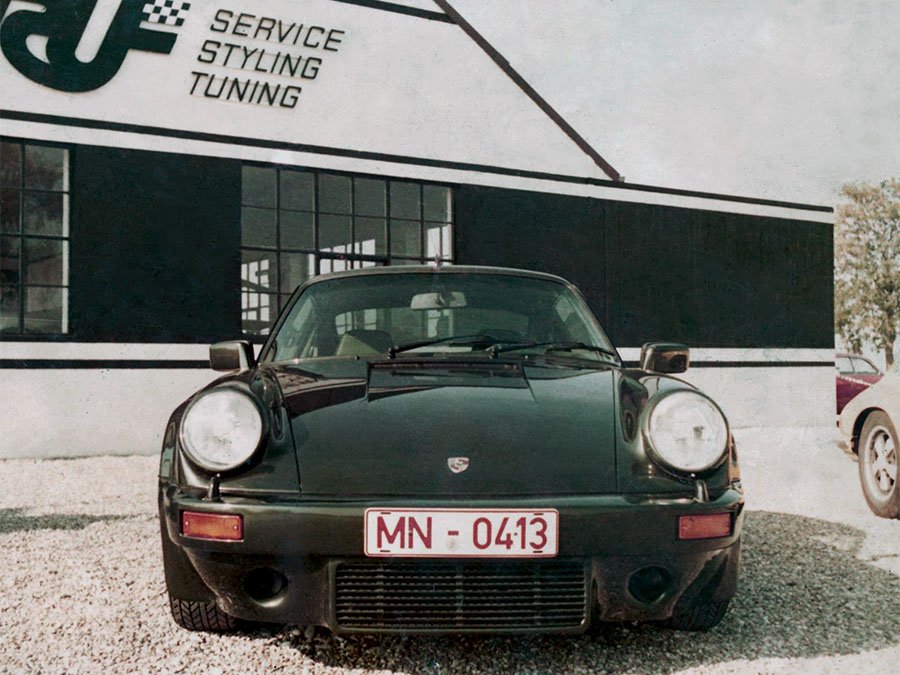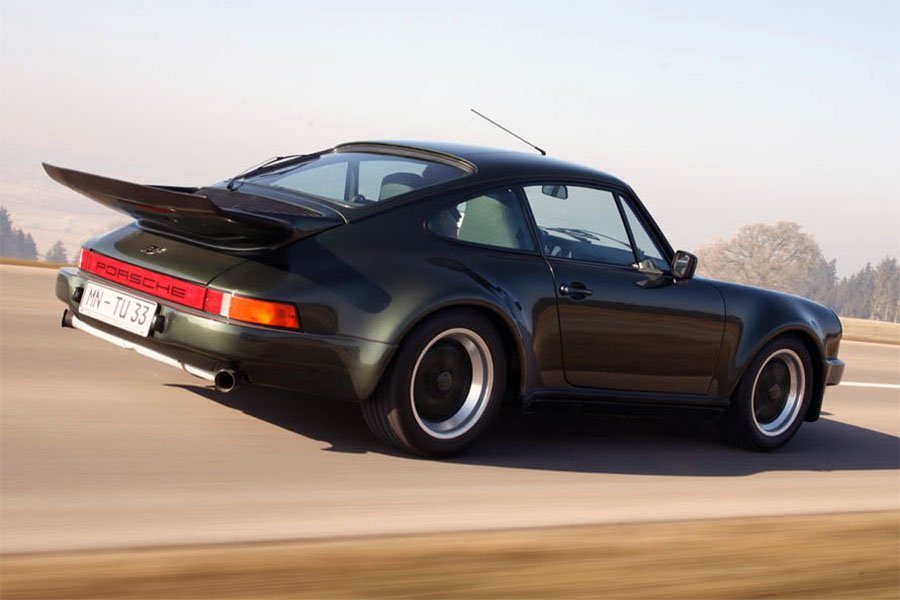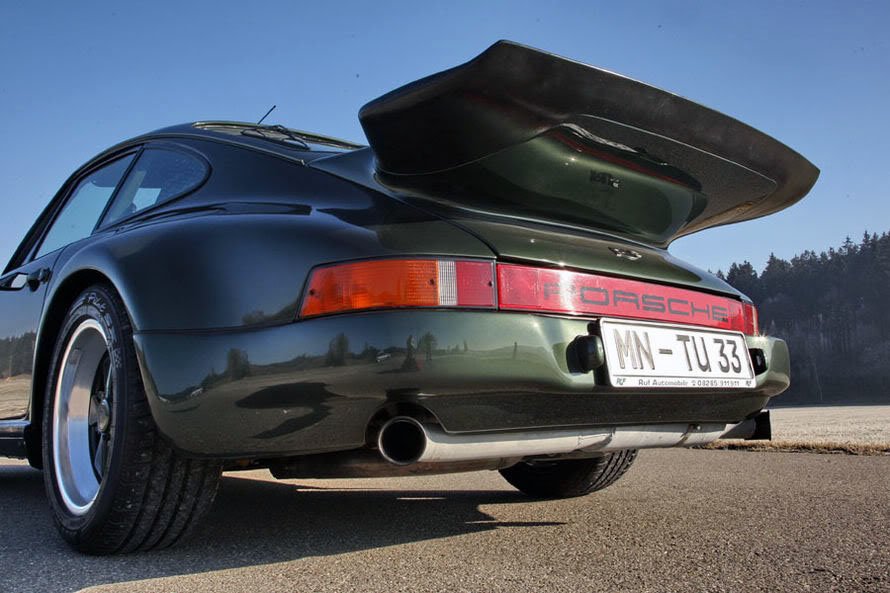Guide: Ruf Turbo 3.3 - a Historical & Technical Appraisal
/BACKGROUND
Following the premature death of his father in 1974, 24 year old Alois Ruf took the reins of his family’s garage in Pfaffenhausen, Bavaria.
Alois Ruf Snr. had founded Auto Ruf back in 1939. Initially the company focused on general automotive servicing and in 1949 a petrol station was added to the forecourt.
The mid 1950s saw Auto Ruf expand into the tour bus market with the company’s own coachbuilt designs assembled mostly on Mercedes-Benz underpinnings.
Ruf’s association with Porsche began in earnest following the launch of the 911 in 1963. Before long, Alois Ruf had convinced his father to focus on the service and repair of Porsche’s new six cylinder model. This in turn evolved into tuning of 911s as the market for customised cars began to grow during the late 1960s.
In early 1975, work began on the company’s first prototype to coincide with early deliveries of Porsche’s new forced induction 930 (the 911 Turbo).
Starting with a standard three-litre 260bhp four-speed 930, Ruf added lightweight bumpers inspired by the seminal 911 3.0 Carrera RS of 1974. Like the RS, a front-mounted oil cooler was fitted. Inside, the cockpit was kitted out with extended hand-stitched leather supplied by the Roser company in Stuttgart.
Even from this early stage, it was clear that Ruf’s approach to personalisation was more understated than certain other tuners as the company sought to strike the perfect balance between elegance and sportiness.
Over the next 18 months, Ruf set about developing a further enhanced 911 Turbo with a bigger engine and uprated gearbox. The resultant Ruf Turbo 3.3 arrived in early 1977. It boasted an engine bored out by 249cc to 3.3-litres which yielded 43bhp more than the standard car. Even more significantly, the Ruf Turbo 3.3 came with a five instead of four-speed gearbox which transformed the 930’s performance.
Despite having been priced at a circa 50% premium over a standard 930, orders for complete Ruf cars began to come in at the rate of around five per year. Each vehicle was built with a mix of genuine Porsche and special Ruf parts and given a new chassis number.
ENGINE / TRANSMISSION
Although its handsomely configured body and high end interior were undoubtedly important attributes, what really set the Ruf Turbo 3.3 apart was its trick engine and gearbox combination.
Production of the standard 930 had begun in February 1975 with each car powered by an air-cooled all-alloy three-litre Flat 6 with dry-sump lubrication, single overhead camshafts and two valves per cylinder. Forged alloy pistons were fitted along with Nikasil-lined barrels and a lightweight aluminium crankcase.
From the factory, the single KKK 3 LDZ turbo ran at 0.8 bar with a water-to-air intercooler and 6.5:1 compression ratio. Fuel-injection was via the familiar Bosch K-Jetronic system.
Although Porsche would go on to release an enlarged 3299cc engine in September 1977, for now the crankshaft used on the factory 3.3-litre engine did not exist. Accordingly, Ruf increased the displacement of its 3.3-litre motor by enlarging the cylinder bores from 95mm to 98.9mm while stroke was kept at 70.4mm. This gave an overall displacement of 3243cc compared to 2994cc for the standard 930.
Housed behind the rectangular RS-style radiator in the front bumper assembly were a trio of oil coolers for the engine, gearbox and air-conditioning systems.
A dual instead of single outlet free flow exhaust was added to more quickly discharge gasses.
The turbocharger, compression ratio and fuel-injection system were carried over with their factory settings.
In this configuration, the Ruf Turbo 3.3 pumped out 303bhp compared to 260bhp at an identical 5500rpm to the regular 930.
The torque rating went from 253lb-ft to 303lb-ft, once again at an unchanged 4000rpm.
For the 915-based five-speed gearbox, Ruf used parts from the Porsche 934 / 935 racing catalogue so it could be adapted for the torque of the turbocharged engine. Upgrades included a specially treated gear spray lubrication, a thermostatically controlled oil cooling system (via the front mounted cooler), a short throw shifter, new pressure plate, new clutch disc and new clutch cable.
Shorter ratios were used on first through third gears with standard ratios on fourth and fifth.
A limited-slip differential with 60% locking factor was fitted as standard.
Ruf created space for the extended transmission housing by doing away with the vibration damper between the engine and transmission which was something the factory did not want to do for reasons of comfort. This inevitably resulted in more cockpit noise, especially at lower speeds, but was a small price to pay for the much-improved performance.
CHASSIS
The starting point for each Turbo 3.3 was a standard steel 930-type monocoque bodyshell.
To this, Ruf added uprated gas-filled Bilstein dampers and dropped the ride height. Suspension settings were typically mid-way between production and competition specification. Wheel spacers were added to provide a slightly wider track.
Standard 16-inch diameter Fuchs wheels were normally retained (7-inches wide front and 8-inches wide rear). Pirelli P7s were Ruf’s preferred rubber.
Otherwise, the rest of the specification was carried over from the regular 930.
The front suspension layout comprised MacPherson struts with lower wishbones, longitudinal torsion bars and anti-dive geometry. Out back were semi-trailing arms with anti-squat. Anti-roll bars were fitted at either end.
Dual circuit brakes ran separate systems for each axle. Discs and calipers were sourced from the 2.7-litre Carrera with 282.5mm and 290mm discs installed front to rear respectively.
Underneath the front lid was a standard 80-litre fuel tank.
BODYWORK
Cosmetically, Ruf normally added simplified fibreglass bumpers in the style of the legendary 911 3.0 Carrera RS which saved a considerable amount of weight compared to the original steel impact-absorbing units.
The front bumper assembly housed a large rectangular intake that fed fresh air to the aforementioned engine, transmission and air-conditioning oil coolers. Circular brake ducts were cut away from either side and the 930’s fog lights were discarded.
The rest of the specification was pure 930, a design characterised by its massively flared fenders compared to a normally aspirated 911 of the period.
OEM body panels were fashioned entirely from steel.
Further customisation could be carried out via Ruf’s long list of optional extras.
INTERIOR
Although the 930 had been conceived as a homologation special to pave the way for Porsche’s turbocharged 934 and 935 racing cars, it was pitched as a high end model unlike the pared down Carrera RS models from the early 1970s.
This very much suited Ruf’s clientele who typically wanted their cars equipped to an even more luxurious specification and routinely selected from the wide array of cockpit options on offer.
930s automatically left the factory with half leather sports seats that featured tartan fabric centres and door panels trimmed to match.
A small diameter leather-rimmed three-spoke steering wheel, extra sound insulation and deep pile carpet were other special 930 items.
An 8000rpm rev counter replaced the 7000rpm tach fitted to regular 911s, but a boost gauge was not initially fitted to production cars. Off to the left of the rev counter were combined read outs for oil pressure / oil temperature and oil level / fuel. To the right was a 300kmh / 180mph speedo and a clock.
Standard equipment included electric windows, a four-speaker stereo with front fender-mounted electric antenna, a rear wiper, headlight washers and fog lights.
OPTIONS
Ruf offered the Turbo 3.3 in both narrow or wide-bodied configurations.
Other options included body coloured trim (for the window frames, door handles, door frames and decorative strips), body coloured wheel centres, heated exterior mirrors and custom damper settings. The standard impact-absorbing bumpers could be retained if desired.
It was inside that Ruf’s customers were really able to go to town.
Upholstery could be specified in full leather (in mono or two-tone) or leather with fabric inlays. The extended leather package included a perforated headliner, a hand-stitched leather dashboard, leather armrests plus all metal and plastic parts covered in matching hide.
Ruf could also install Recaro sports seats, central locking, interior footwell lighting, additional instrumentation, a centre console and an array of high end audio systems.
WEIGHT / PERFORMANCE
Thanks to the removal of the heavy impact-absorbing bumper assemblies in exchange for lightweight fibreglass RS-style items, a Ruf Turbo 3.3 sans air-conditioning and elaborate audio system tipped the scales at 95kg less than a standard 930 (1100kg as opposed to 1195kg).
In narrow body trim, top speed was 176mph which dropped to 165mph for the wide-body version. For comparison, the standard 930 had a 154mph top speed.
Because the five-speed gearbox reduced the wide spread of power delivery over the standard four-speed version, acceleration times were much-improved and it was considerably easier to keep the engine on boost.
In terms of the benchmark 0-62mph time, the Ruf car posted a figure of just 5.2 seconds compared to 5.7 seconds for the production 930.
PRODUCTION CHANGES
Although Porsche introduced their own 3.3-litre 930 in September 1977, Ruf still did good business uprating existing three-litre cars for their customers. There was also plenty of demand for factory 3.3-litre 930s with Ruf’s five-speed gearbox.
In 1978, Ruf began to offer their turbocharged model with similar style bumpers to the new SCR. The impact absorbing elements were retained at either end while up front were the aforementioned RS-style intakes complete with a jutting chin spoiler. Koni dampers were also added to the options list along with a four outlet exhaust.
In 1981, Ruf moved on to a dog-leg gearbox based on the four-speed unit from the 930 to which an additional gear was added. Cabriolet and Targa body styles were now offered as well.
That year, Ruf received certification from the German Federal Motor Vehicles Bureau as manufacturer in its own right. This was done because Porsche insisted Ruf be responsible for the safety of its cars that were operating at performance levels well above the originals.
END OF PRODUCTION
1983 saw Ruf replace the Turbo 3.3 with their new 374bhp BTR.
By this time it is believed that around 15-25 turbocharged cars had been converted by Ruf to varying specifications.
Text copyright: Supercar Nostalgia
Photo copyright: Ruf - https://www.ruf-automobile.de/en/ & Auto Motor und Sport - https://www.auto-motor-und-sport.de/































